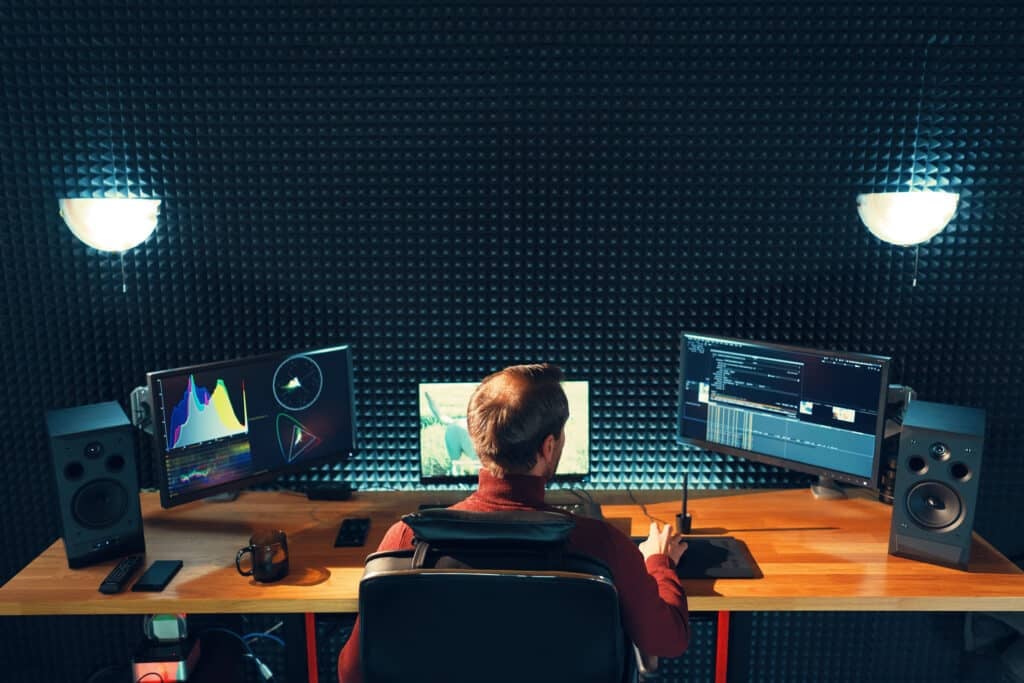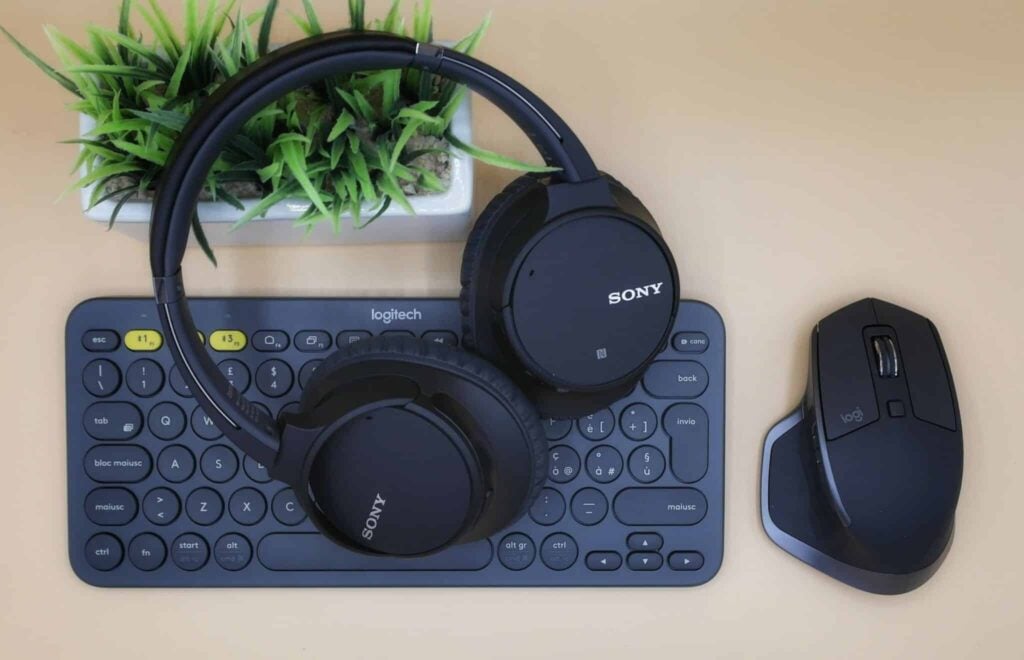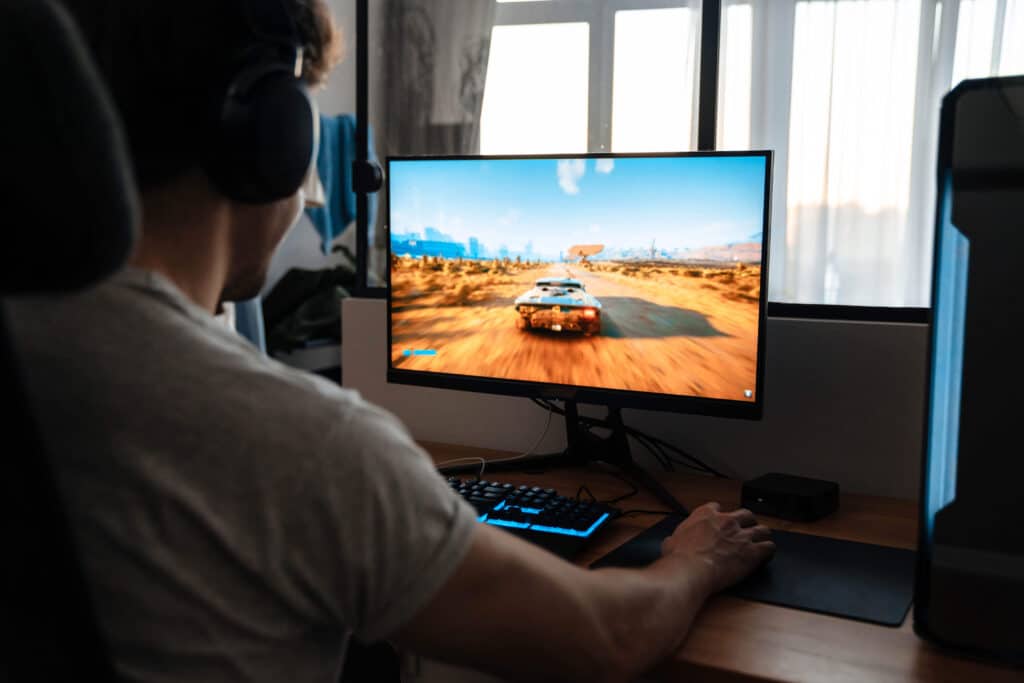Are you trying to pick the right monitor aspect ratio for your needs? It can be a daunting task, with all of the different sizes and ratios out there. Don’t worry though – this guide will help you understand monitor aspect ratios and find the perfect one for you. We’ll explain what monitor aspect ratios are, discuss their pros and cons, and give advice on which one is best suited for each major use case. So let’s dive in!
What is an aspect ratio?
An aspect ratio is a mathematical comparison of the width and height of a monitor. It tells you how much taller or wider one monitor is compared to another. Aspect ratios are usually expressed as two numbers separated with a colon, like 16:9. The first number represents the monitor’s width while the second number indicates its height.
Measuring Aspect Ratios:

You will occasionally find aspect ratio indicated as a single number, such as 1.33 or 1.78. In this situation, the ratio has simply been divided — a 4:3 aspect ratio can be expressed as 4/3 = 1.33. Even less commonly, this might be turned back into a ratio, such as 1.33:1 or 1.78:1.
If you are even confused, use an aspect ratio calculator to convert the aspect ratio into a single number.
What are the Most Common Aspect Ratios for Computer Monitors?

Aspect ratios are used in film and photography and can be used to measure screen size on other devices such as smartphones, tablets, and TV. But for the purposes of this blog, we will be looking at the best aspect ratios for a computer monitor.
4:3 Aspect Ratio- Fullscreen
The 4:3 aspect ratio has been around since the very beginning of television. It was first used in black and white televisions and is still used in some older models today. This aspect ratio mimicked the film stock that was used at the time to record motion pictures, so this became the standard screen size.
This aspect ratio is also referred to as “standard” or “fullscreen”. The idea behind this ratio was that it matched the shape of a typical movie theater screen, allowing for more realistic viewing experiences when watching films at home. While modern TVs have evolved to use different aspect ratios, like 16:9 widescreen, the 4:3 aspect ratio remains popular due to its simplicity and compatibility with old-school media formats.
16:9 Aspect Ratio – Widescreen
16:9 is the most common aspect ratio used today, and it’s often referred to as the “widescreen” aspect ratio. This ratio became the standard as recently as the 2010s and is designed to support 1080p video resolution and provides a wider field of view than other monitor sizes. It has become the standard for modern films and television shows because it offers an immersive viewing experience that allows viewers to appreciate all of the details in each scene. With its expansive width, this aspect ratio also makes multitasking easier by allowing you to have multiple windows open at once without sacrificing image quality or clarity.
21:9 Aspect Ratio – Ultrawide
The 21:9 aspect ratio monitor, otherwise known as an “ultrawide” monitor, is quickly becoming the go-to monitor size for gamers and professionals alike. It offers a wider field of view than traditional 16:9 monitors while maintaining image quality and clarity. The extra width allows users to open multiple windows at once without sacrificing any details in their work or gaming experience. This monitor size also supports higher resolutions like 4K and 8K for an even more immersive experience. With its expansive field of view, multitasking capabilities, and high-resolution support, it’s no wonder why the 21:9 ultrawide monitor has become so popular among users who demand the best from their screens.
32:9 Aspect Ratio – Superwide
The 32:9 aspect ratio monitor is the newest monitor size to hit the market and it’s quickly becoming a popular choice among gamers and professionals. This monitor, also known as a “superwide,” offers twice the standard 16:9 screen real estate in a single monitor, allowing users to open multiple windows at once and enjoy an incredibly immersive experience.
It has all the same capabilities as ultrawide monitors such as 4K and 8K resolution and multitasking capabilities. However, this monitor also offers an even wider field of view and can be used to create a multi-monitor setup without the need for multiple monitors. This monitor provides users with an unparalleled viewing experience that allows them to get more done in less time.
This can be a great option for users who are considering a dual monitor setup but are looking for a more cost-effective option. The only drawbacks are you will need a large desk to accommodate a monitor this size.
The Best Aspect Ratio to Use Per Use Case:
The aspect ratio of your monitor is an important consideration when deciding on the best monitor for your needs. Different aspect ratios are better suited to different use cases, so it’s important to know which ratio is right for you.
For General Use and Streaming:
For general use and video streaming, a 16:9 monitor is the ideal choice. Most movies and TV shows on popular streaming services these days use a 16:9 aspect ratio, so it doesn’t matter if you use a wider monitor, the video will stay the same ratio.
For Creative Work
For creative work such as graphic design and video editing, the 21:9 aspect ratio monitor is an ideal choice. This monitor size offers a wider view than traditional 16:9 monitors, allowing for better multitasking capabilities that allow users to open multiple windows at once without sacrificing any details in their work or gaming experience. The monitor also supports higher resolutions like 4K and 8K, which provides an even more quality and detailed experience.
For Gaming
If you want the most immersive gaming experience, the newest 32:9 monitor ratio offers an unparalleled viewing experience that allows gamers to get the most out of their gaming sessions. This monitor size combines all the same capabilities as 21:9 monitors while offering an even wider field of view. This monitor size also allows for a multi-monitor setup without the need for multiple monitors, which is perfect for gamers who want to get an even more expansive view, but 21:9 ultrawide screens will give you an immersive experience as well and can be a more cost-effective choice.
For Office Use and Multitasking
For regular office use, a 16:9 monitor is the ideal choice. The monitor size allows for ample viewing of documents and other work material without sacrificing any details in their work. For more intensive multitasking needs, however, a 21:9 monitor can provide an even better experience allowing users to open multiple windows at once. Working from home? Check out our blog on the top monitors for a home office.
Conclusion
Aspect ratios are an important part of monitor selection, and understanding them is the key to finding the monitor that best fits your needs. Different aspect ratios have different advantages and disadvantages depending on what you want to do with it, so make sure you think about how you plan to use your monitor before fully assessing all the monitor aspect ratios available. With the right aspect ratio, you can get the most out of your monitor and make sure that it meets all your needs.
If you have any additional questions, don’t hesitate to reach out. Happy shopping!
Frequently Asked Questions:
What other monitor specs should I consider?
In addition to the aspect ratio, monitor specs such as resolution, size, refresh rate, and response time should also be taken into consideration when selecting the right monitor. Resolution determines the clarity of images displayed on the screen, while monitor size is self-explanatory. Refresh rate is how quickly a monitor can update its display, which affects gaming performance. Response time is how quickly a monitor can respond to input from the user. These specs all play an important role in monitor selection so it’s best to read up on them before making your decision.
How do I find my monitor’s aspect ratio?
The aspect ratio of your monitor can be found by looking at the monitor specifications. Most monitor manufacturers will list the aspect ratio as either a 4:3 or 16:9 ratio. The aspect ratio indicates the width and height of the monitor, and it is typically expressed in terms of its width-to-height ratio. For example, a monitor with a 16:9 aspect ratio would have a width of 16 and a height of 9.
What is the difference between screen size and aspect ratio?
Screen size refers to the physical dimensions of the monitor such as its width and height, while aspect ratio is a numerical representation of that monitor’s width-to-height ratio. Aspect ratios are typically expressed in terms of their width-to-height ratio. For example, a monitor with a 16:9 aspect ratio would have a width of 16 units and a height of 9 units. Depending on the device this could be measured in pixels, inches, or millimeters. For monitors specifically, this would be 16 inches in width and 9 inches in height. Screen size does not indicate the monitor’s resolution or capabilities, but it does affect how much information can be viewed onscreen at any given time. Aspect ratio, however, determines the shape or form factor of what is displayed on the screen and affects how large objects appear when compared to other objects or elements in your environment.
What is the best aspect ratio for monitors?
The best aspect ratio for monitor use depends on the intended purpose. For gaming, 32:9 is considered to be the most immersive monitor size offering an unparalleled viewing experience. For office use and multitasking, a 16:9 monitor is the ideal choice as it allows for ample viewing of documents and other work material without sacrificing any details in their work. For more intensive multitasking needs, however, a 21:9 monitor can provide an even better experience allowing users to open multiple windows at once. Ultimately, it is up to the user to consider their individual monitor needs and find the monitor that best fits their purpose.



